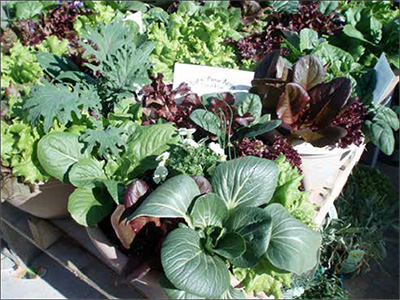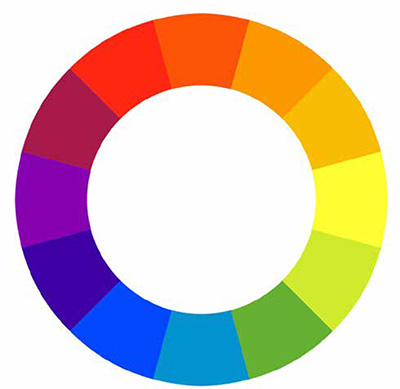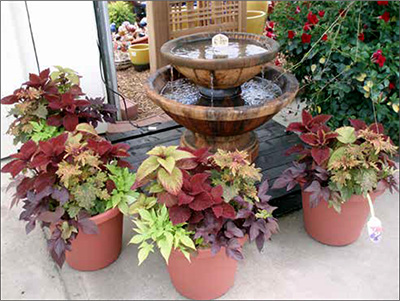
Container gardening in a sunny area tip sheet
DOWNLOADMay 11, 2017 - Bridget K. Behe
Whether you live in a home that has some space for an in-ground garden or just want to make a part of your patio, porch, or deck more beautiful, container gardening is a great way to bring the outdoors closer to your living areas. A few minutes of planning and preparation will improve your success and enjoyment of any container garden.
Site selection
Sunny containers need to be placed in a location with at least six hours of sunlight each day. Shade from overhangs, buildings or furniture will decrease the total number of hours the container receives sunlight, so take that into consideration as well.
Container selection
The most important part of container selection is to find a container with sufficient drainage holes in the bottom. Anything, in theory, can be a container from boots to wagons to tires. A good container has numerous small holes, ideally quarter-inch holes every two to three inches of container bottom. One large hole does not permit as much drainage as numerous small holes.
Material
Plastic containers are lighter in weight and can be more easily moved from one spot to another, if you like to move containers as you might move your furniture. Resin containers look like clay or terracotta, but are also lightweight and easily moved. Real clay and terracotta containers are heavy and may not be as easily moved. Concrete, iron, and other materials may not be moved much, if at all. Hanging basket containers may not have solid sides, but have coconut coir or other natural material sides.

Lettuces can be combined into a fun and tasty container garden that can be cut weekly.
Solid wall containers will generally hold more moisture longer than containers with sides of natural materials. Terra cotta is an exception as some moisture is lost through the unglazed clay container. Take the material into account as you determine container size and the number of plants you can easily grow in the container.
Size
The size of the container limits how much potting mix it can hold. Smaller volume containers (and especially smaller containers with natural material side walls) will dry out much faster than larger containers with solid side walls. Hanging baskets with coir (coconut fiber) sides may require watering two or three times per day during warmer months. If you don’t want to water that often, select a larger volume container and one with solid side walls.
Potting mix
It is best to use a potting mix, one you purchase or make, rather than field soil in any container. Lighter mixes will drain better, have better root development, and will give you a lighter total container if you want to move it. Mixing equal parts (by volume) of peat moss and perlite makes a great potting mix for most plants. You can also purchase potting mixes, but avoid heavier “potting soils,” which may not drain well.
Fill containers with mix and wet the dry potting mix with warm water before adding plants. In very large containers, use solid pieces of Styrofoam to fill no more than one-third of the total volume of the container. Do not use Styrofoam peanuts to fill a part of the container. Often, these peanuts are now biodegradable and will “melt.” Larger pieces of Styrofoam won’t compact and will just take up space, saving money on potting mix.
Plant selection
How many plants do I need?
As a general rule of thumb, select approximately one plant for each six inches of the diameter of the top of a round container. For example, if your container measures 18 inches across the widest part of the top, then use only three plants in that container. Often, larger diameter containers are deeper and can hold more potting mix. If you over-crowd a container, plants won’t grow as well and you will be watering very often. If your container is square, calculate the area of the top of your container (a six inch by two foot window box has 144 sq. inches) and then divide by 36 sq. inches for each plant (the window box would hold 144/36=4 plants).
What kind of plant shapes should I use?
After plant number, think about creating living art by adding a thriller, filler, spiller, and (space permitting) chiller. The thriller is a tall plant that gives the container the visual element of height. The filler is the plant that is as wide as it is tall and “fills” the container. The spiller is a plant that goes over the side of the container or “spills” over the edge. The chiller is the cool plant or one that might create a visual focus or draw the eye to the container. The following table has some suggestions for the four types of plants in a sunny container garden.
|
Types of plants for sunny garden container | |
|---|---|
|
Thriller |
Ornamental grasses, Cannas, Cleome, Hibiscus, Geranium |
|
Filler |
Euphorbia Diamond Frost, Lantana, Osteospermum |
|
Spiller |
Petunia, Calibrachoa, Ipomoea (sweet potato vine), verbena |
|
Chillder |
Geranium, Coleus |
Color themes
Container gardens can have plants of one main color (purple, yellow, etc.) or be a blend of several related colors (yellow, orange, red), which are usually close to each other on the color wheel. Sometimes, contrasting colors can make a nice container garden. These colors appear opposite each other on the color wheel.

Color wheel.

Coleus and sweet potato vine are a nice mix of foliage colors and textures for the sun.
Heat tolerant annuals
Some garden locations are quite sunny and hot. Without using some tough plants, the containers might decline quickly. Consider gomphrena, lantana or scaevola. The first two plants are more upright fillers or thrillers and the scaevola and verbena are spillers.
Perennials and woody plants
Don’t hesitate to be creative when selecting container plants. Small flowering woody shrubs and many types of perennials, such as coral bells and some perennial grasses can make lovely additions to the mix.
Care and maintenance
Keep containers well-watered to keep containers healthy and actively growing. Healthy containers are more disease and insect resistant than water-stressed or over-watered containers. As a point of reference, a 10 or 12-inch hanging basket should weigh as much as a gallon of milk if it is well watered. As the plants grow, they will use more water each day and may need to be watered twice daily in late summer.
Fertilize
Fertilize following the fertilizer’s label directions. Most containers will benefit from regular fertilization, either from slow or controlled-release fertilizer or regular application of a soluble fertilizer.
Deadheading and pruning
Some plants, like geranium and petunia, will produce more blooms faster if the old, dead, and spent blooms are removed. If spiller plants, like petunias, get stems or branches that are too long, leggy, or thin, you can prune or remove a half to two-thirds the total length of the stem and often it will produce two to three new stems that grow more vigorously.



 Print
Print Email
Email





